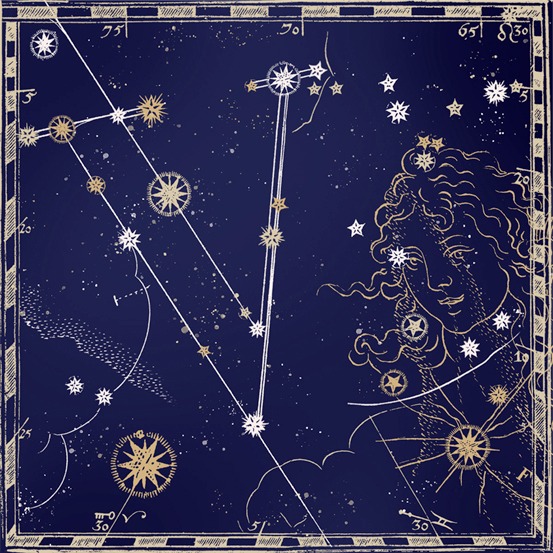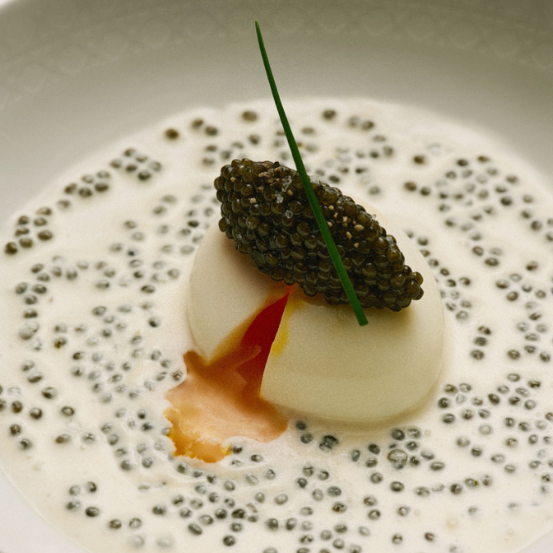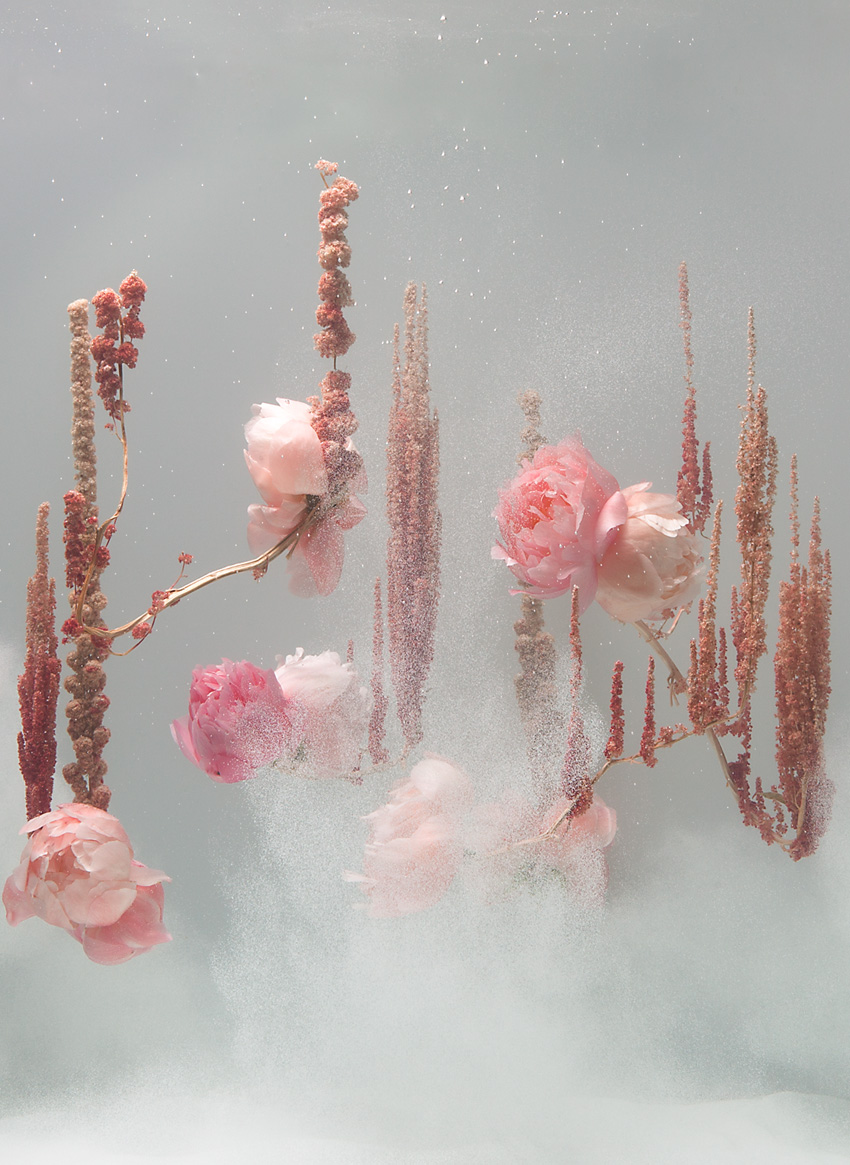The Mystery Issue
The sense of smell may well be the last stronghold of our humanity.
Far removed from the times when fragrances were merely used to mask unpleasant odours or as a means of drawing closer to the Divine, today they are employed as part of our individual style; powerful, mysterious, invisible forces capable of altering our mood—true works of art that develop over time, surprising us with each note. The intimate link between scent and emotion elevates perfumes beyond mere smells; they become custodians of stories and profound meanings. Olfactory contemplation has always been a universal human need, but in a world where everything seems to be revealed instantly, is there still time or need to philosophise about the mystery of the "message in a bottle"?
Gaston Bachelard—a French philosopher, chemist, and poet—was known for his reflections on the poetry of space and the senses. He profoundly linked smell and perfumes to intimacy and subjectivity. Bachelard regarded scent as one of the most emotional and evocative senses. For him, perfumes did not merely stimulate the sense of smell; they activated a dreamlike, subjective dimension, creating an experience rich in deeply personal emotions. Smell demands presence: there can be no distance between the object being smelled and the subject sensing it; yet when we inhale an aroma, it enters our body, merges with our identity, activates deeply personal memories and associations, and transports us to infinitely distant places. Scent is immaterial—there is, in fact, nothing to see. The olfactory system is the only sensory system with a direct projection to the brain's memory and emotional centres. It operates unconsciously, automatically, and involuntarily. Perfume is a fluid emotion with the ability to bridge the external world and inner life, becoming a form of Freudian rêverie, a daydream leading us to an intimate state of nostalgia. More than any other sense, smell fosters this sensation of closeness, of being within our own subjective experience. Hence, from a Bachelardian perspective, perfume can be seen as a catalyst for intimacy, both with oneself and with the memories and emotions it evokes.
The mystery surrounding the sense of smell is closely linked to how the brain processes information. When we inhale a fragrance, the odorous molecules travel swiftly through the nostrils, directly reaching the limbic system—the part of the brain responsible for emotions and memories. Unlike other senses that undergo rational filtering in the cerebral cortex, smell is perceived immediately and intuitively. This is why a simple aroma can trigger long-forgotten memories or change our mood in an instant.
In the semi-autobiographical novel In Search of Lost Time (1913) by Marcel Proust, the protagonist is immersed in childhood memories upon tasting a madeleine dipped in tea. This phenomenon illustrates the powerful connection between the senses—in this case, smell and taste—which are linked to the brain’s limbic system and merge into what we call “flavour,” highlighting their central role in involuntary memory. Frequently referenced in the art of perfumery, the Proustian madeleine principle brings us back to this very concept: a state of mind bestowed by perfume; the emotions we feel when we inhale its scent; a moment when a distant memory is evoked by a sensory stimulus.
A specific perfume can evoke vivid memories and intense emotions, such as a visit to a special place, a cherished person, or even a particular phase of life. This phenomenon is intentionally harnessed by perfumers, who seek to create fragrances that not only please the sense of smell but also provide a rich and meaningful sensory experience. The power of olfactory beauty resides here: in memory and emotion. Each inhalation is a canvas, painted with clarity.
As one might expect, there exist numerous historical references dedicated to the perfumes of celebrities. Marilyn Monroe and Chanel No. 5 by Chanel; Princess Diana and First by Van Cleef & Arpels; Michelle Obama and Love in White by Creed; Victoria Beckham and Room Service by Vilhelm Parfumerie. Just last September, the British brand Penhaligon’s—heavily invested in applying neuroscience to the development of their fragrances—shared an interview on their Instagram with actor and screenwriter Richard E. Grant, which deeply moved its followers. When asked, “What makes a perfume so special?”—visibly emotional as he inhaled the iconic Bluebell—Grant remarked that he had been married to his wife, Joan, for 38 years until her recent passing, but for a moment, he felt her presence: “This brings my wife back to me!” he exclaimed.
An exclusive perfume can be as integral to a person as the colour of their eyes or their height, evoking nostalgia and establishing a foundation for discovery. The great perfume houses of the world capitalise on precisely this sentiment. Stumbling upon a familiar fragrance is an instant flashback, a direct gateway to another time and place. This phenomenon is not as readily experienced through visual or auditory senses. Perfume imparts a mysteriously captivating three-dimensionality. It is not merely a random collection of scents—it is an art form, much like music or painting. Every note—top, heart, and base—is meticulously selected and arranged in harmony, creating an experience that unfolds over time. Scents, in their raw state, may be linked to nature, memory, or function. They are ubiquitous, yet not all are classified as perfumes. However, when crafted into perfumes, they acquire layers of meaning beyond their immediate sensory impression. They frequently carry symbolism and are shaped by cultural values and personal associations.
The more artistic side of cosmetics—reaching its quintessence in perfumery—grows each year, captivating an ever-wider audience and fuelling this industry both directly and indirectly. It does so because it addresses a fundamental human need for beauty. Perfume is the sole human creation that engages this aspect of our being. It is therefore unsurprising that its availability is so abundant, much like in other artistic domains, such as cinema or photography. For those who take pleasure in the scents worn by others, it is worth noting that what we typically perceive are the base notes of the olfactory composition—the ones that linger the longest and convey the soul of the fragrance. There is a certain magic in discovering them, as they take hours to reveal themselves. This is the most unpredictable aspect of a fragrance, the one the perfumer struggles most to foresee in terms of how it will manifest. It is the outcome of what time does to the idealised creation once applied to the skin, subjected to the passage of time. This “life of its own” mystery is what liberates the creator from omnipotence.
In 1869, in his novel The Idiot, Dostoevsky wrote, “Beauty will save the world.” This is one of the most famous and enigmatic quotes from the novel, and indeed from literature in general, uttered by the character Prince Myshkin, who is often seen as a Christ-like figure, embodying innocence, compassion, and moral purity. Beauty is often perceived as something that affects us exclusively through the senses of sight or sound, but it can also be profoundly articulated through the art of perfumery. In perfumery, beauty is not limited to the appearance of the bottle; it encompasses a broader sensory experience, with the power to enrich daily life in ways that, though invisible, are deeply impactful. Could perfumery be described as the art of dematerialising beauty? An art that promotes both evolution and elevation?
Charles Pépin, a contemporary philosopher, offers an intriguing analysis of this phrase through the lens of Immanuel Kant’s philosophy. In Kant’s view of beauty—primarily explored in his work Critique of the Power of Judgement (1790)—the shared experience of beauty unites us into a community of those who appreciate the sublime, and by fostering bonds of humanity and empathy, we promote peace.
In 2022, the Museo Nacional del Prado in Madrid presented a groundbreaking exhibition that incorporated fragrances to enhance the experience of a 17th-century painting, The Sense of Smell, by Jan Brueghel the Elder and Peter Paul Rubens. Perfumer Gregorio Sola created ten fragrances that evoked the scents depicted in the painting: a luxurious and detailed celebration of sensory experiences, particularly of the olfactory. This multisensory approach enriches the interpretation of the artwork, engaging a sense that is typically not associated with visual art.
The exhibition was so successful that the museum created a permanent installation featuring a diffuser that replicates the scent of a perfumed glove, a common item in the 17th century. Using Puig’s AirParfum technology, the installation offers an olfactory experience that is safe for the museum environment and demonstrates the profound connection between art, fashion, and perfumery. A scent is worth more than a thousand words, or even a thousand images… the sense of smell encompasses all others in its cerebral pathways and in the way it aids memory. And if this seems exaggerated—if we feel that sight or hearing are far more useful senses—we should not overlook the fact that for humans, smell is an essential sense of alert, and its alteration can significantly affect our physical and mental health.
Only 0.01% of the global population suffers from anosmia: the inability to perceive smells. Throughout our lives, the sense of smell protects us from ingesting what could kill us. Our brain rejects certain molecules, not through value judgment but out of a survival instinct. This explains why we cease to notice a fragrance when we wear it daily, even in large quantities. Our olfactory receptors become “immune” to familiar scents so that we remain alert to new ones. Like vision and hearing, our sense of smell is affected by the ageing process. When our sense of smell diminishes, our mental health is also impacted. The decline of the olfactory sense is associated with memory loss, cognitive decline, and a reduction in overall well-being, even depression. Our brain needs substantial olfactory stimulation to maintain its health.
Faced with this decline, can such a primitive sensory system be refined? Yes, with attention. Perhaps more than any other sense, the vast majority of information we receive through our nose goes unnoticed; it is a silent sense. The key to improving it lies in translating the automatic and unconscious process into a conscious experience. To navigate the world of scented notes, we need to become amateur osmologists, studying the world through chemical reactions, metabolic processes, and environmental conditions. We must also examine our inner world, for when a scent is processed by the limbic system, it is encoded into our autobiographical memory. Olfactory training kits are already commercially available, but if we wish to start immediately, we only need to consciously smell the aromas around us.
Annick Le Guérer—anthropologist, philosopher, and historian of odours, the sense of smell, and perfume—notes that for centuries, philosophers such as Plato, Aristotle, Descartes, and Kant disregarded the sense of smell, deeming it vulgar, inarticulate, inferior, and insignificant. Kant even claimed that we could appreciate a garden solely for its visual beauty, and that it would be better if the sense of smell remained underdeveloped. Nietzsche was the first to revalue it, considering it a tool for discovering truth in the world. Despite the importance Nietzsche placed on it, the study of olfaction remains limited and uncertain, both neurologically and psychologically, including even the number of molecules we can detect. Scientists have studied the senses since the Enlightenment, but it was only in 2014 that they discovered we can identify 1.7 trillion different molecules… yet the debate on what makes a molecule aromatic remains unresolved. Scent is a mystery as profound as the oceans; its relationship with memory is both tangible and inexplicable.
Experts in olfactory marketing assert that smells trigger 75% of our daily emotions. Clinique pioneered this in the 1990s with Happy, a citrus perfume focused on joy and optimism, which remains a best-seller under the Estée Lauder group. Similarly, Givaudan’s VivaScentz™️ technology represents an innovation aimed at developing fragrances that positively influence emotional well-being, part of the growing trend of functional perfumery, as seen in Elizabeth Arden’s Eau Fraiche from White Tea collection. The trend towards pheromone-inspired perfumes aligns with a broader consumer desire for fragrances that enhance their personal chemistry and natural scent profiles. A leader in this segment is Escentric Molecules, whose existence owes itself to an aromatic molecule that doesn’t exist in nature but is used by the brand in high concentrations: Iso E Super, created in IFF’s (International Flavors & Fragrances) laboratory, highly valued for its velvety, enveloping effect and its ability to amplify the musky scent of skin. Escentric Molecules Molecule 01 and I Don’t Know What by D.S. & DURGA are examples of perfumes containing this ingredient, producing different scents depending on the wearer.
IFF has been studying the invisible power of ingredients for over 40 years through its Science of Wellness programme, creating—using Artificial Intelligence, market research, and neuroscience—essences that convey real messages. A recent example is the Scent of a Dream collection by Charlotte Tilbury, where the creator states: “I wanted to bottle the frequencies of love, happiness, seduction, serenity, energy, and empowerment—so that everyone could apply these six universal sensations and experience the transformative power of beauty.”
As a cosmetic, perfume transcends mere aesthetic utility and endures through time. Over the centuries, it has evolved, but its essence—the mystery and magic that reside in the power of scent—continues to captivate us. And so, as we lose ourselves in the notes of a well-chosen fragrance, we are reminded that, in the game of the senses, smell holds a prominent position, shaping our experience of the world in ways that are as subtle as they are powerful. Thus, it is fitting to reflect philosophically on this invisible art, cultivating the belief that the future will surround us with sublime fragrances.
Translated from the original in Vogues Portugal’s “The Mystery Issue” Issue, published October 2024. Full stories and credits in the print issue.
Most popular



Relacionados

Adistar Control 5: um regresso ao passado da adidas Originals, com os olhos postos no futuro
10 Dec 2025





